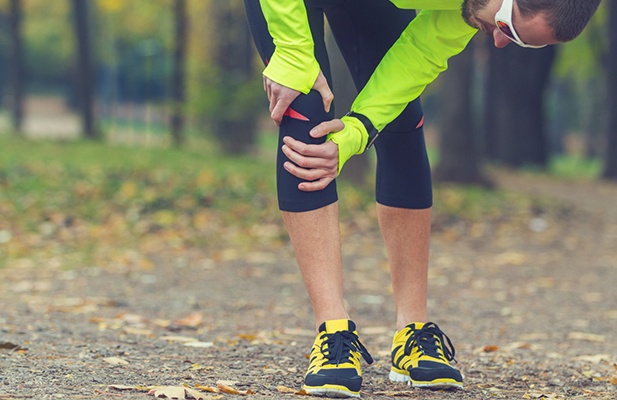
Running is one of the most popular ways for people to have fun and increase their overall fitness. It's easy to do, doesn't require a large initial investment in equipment, and can fit into nearly anybody’s schedule. It's a simple, enjoyable way to take care of yourself and your body.
Unfortunately, thousands of people experience running injuries every year. Statistics vary due to the wide variety of types of runners, but the average recreational runner who participates now and then in a long-distance run, has an average of a 37-56% chance of experiencing an injury every year. Calculated differently, there is an average of 2.5 - 12.1 injuries per 1000 hours of running. (source)
Studies show that running injuries are not correlated with age, gender, body mass index, running on hills, running on hard surfaces, time of year or time of day. Most running injuries are related to overuse and repetition of the same movement, predominantly in the knees, and 20-70% of running injuries are recurrences of previous injuries. Running injuries lead to a reduction or cessation of training 30-90% of the time, medical consultation or treatment 20-70% of the time, and lost work up to 5% of the time.
While this high frequency of running injuries may be partially attributed to the casual nature of the activity, usually undertaken without training or supervision, it's important that the activity we undertake in order to improve our health not become a cause of harm. Safer running can be practiced by everyone, every time, to reduce the chance of injury and help maintain health and fitness. Here are three ways to help reduce your risk of injury from running.
Wear proper shoes
While running is celebrated partly due to the low cost of entry, having the proper shoes is essential to prevent injury. Proper shoes will also boost speed and performance, and reduce recovery time between runs.
Look for running shoes that:
- Have room in the toes. Feet swell during a run, so your running shoes may be a half or full size larger than your normal size. Make sure you have enough length and width for your toes to wiggle, and try on shoes at 4pm when your feet are their biggest.
- Hold your heel. If possible, jog a little bit in the shoes while trying them on to make sure the heel stays in place and doesn't slip.
- Are firm. Soft cushions may feel nice when trying them on, but firmer soles will give you less stress and more stability on the road.
- Have the right arch for your foot. If the shoe doesn't contour to your natural arch, add an insert for the correct support.
Don't set out for a long distance run in a new pair of shoes. New shoes may cause blisters or unexpected hot spots, and shoes will take a few runs to loosen up and become more flexible. Wear new shoes on easy running days, or on a treadmill where you can easily stop if there are shoe problems.
Warm up correctly
Warming up is essential to prepare your body for the stress of exercise, and is crucial for preventing injuries. Because running injuries are often repetitive strain injuries, remember to warm up and engage your stabilizing muscles and your core, and practice good form. Your warm up should consist of:
- A few minutes of walking or light jogging to increase your heart rate and oxygenate your body.
- Dynamic stretching, to deliver heat and oxygen to the muscles, ligaments, and tendons.
- Take a few minutes to run easily, with proper form, before hitting your desired speed.
If you are already warm, due to normal activity and warm weather, your warmup can be as little as 5-10 minutes, but should never be omitted.
Listen to your body
This is the most important way to prevent injury. Remember that your cardiovascular fitness improves more quickly than your muscular and skeletal fitness; you may feel fit and ready to run longer distances within 2-3 weeks, but the bones in your lower body will take 4-6 weeks to be able to regularly withstand the impact of running. If anything hurts or is difficult, slow down and go easier. If you experience difficult recovery days, ease your training regimen accordingly. Ignoring a small injury increases the chances that it will become a major problem. Don't focus on pushing yourself as hard as you can for as long as you can; focus on form and consistency, with more intense intervals.
We highly recommend keeping a training log, not just to track your progress and successes, but to document runs, surfaces, shoes, pain, and recovery times, so you can find out what works best for you.
Following these tips will help you get more out of every run, without causing injury or sacrificing your health. Running is one of the best things you can do for your body – do it safely and enjoy it for years to come.






-1.png)

